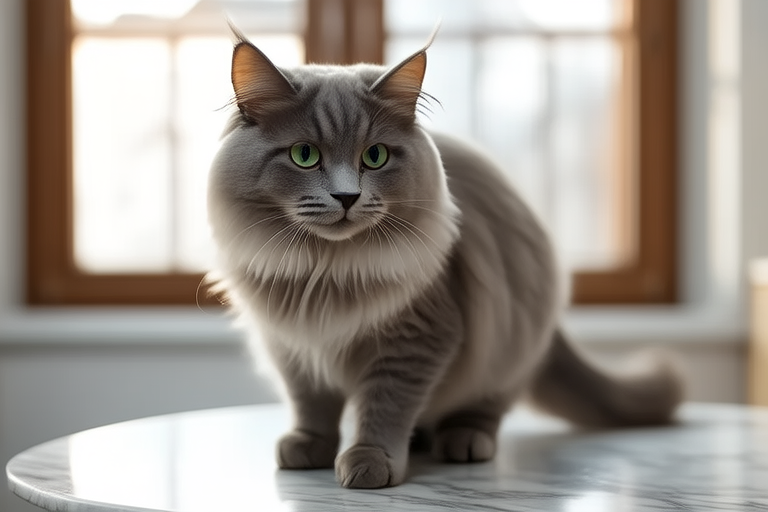Unleashing the Grace: Everything You Need to Know About Turkish Angoras
Welcome to the world of the Turkish Angora, one of the most elegant and graceful cat breeds. Originating from the Ankara region of central Turkey, these cats have captivated the hearts of cat lovers for centuries. Known for their silky coats, striking blue eyes, and playful personalities, Turkish Angoras are a testament to natural beauty and charm. This article will delve into the history, physical attributes, temperament, care requirements, and health concerns associated with this remarkable breed, providing you with everything you need to know about becoming a proud owner or simply appreciating the Turkish Angora’s unique qualities.
The Origins and Unique Characteristics of Turkish Angoras
The Turkish Angora has a rich history dating back thousands of years. Legends and myths surround this breed, with some tales suggesting they were worshipped as sacred beings in ancient times. The breed was nearly wiped out during the 17th century due to crossbreeding with other local cat populations. However, a dedicated breeding program initiated by the Ankara Zoo in the early 20th century helped preserve the purebred lineage of the Turkish Angora. Today, these cats are celebrated for their distinctive features and are recognized by major cat registries worldwide.
Physical Attributes: Coat Types and Colors
Turkish Angoras are known for their long, flowing coats that come in a wide array of colors and patterns. Their fur is soft and silky, with a fine texture that gives them a luxurious appearance. While white is the most common color, Turkish Angoras can also be found in various shades of cream, black, red, blue, and tortoiseshell. They may display tabby, solid, bicolor, or parti-color patterns. One of the most iconic features of the Turkish Angora is its semi-longhair coat, which requires regular grooming to maintain its lustrous shine.
Temperament, Intelligence, and Behavior
Turkish Angoras are highly intelligent and social creatures, often forming strong bonds with their human companions. They are curious and playful, always eager to explore their surroundings and engage in interactive play. These cats are known for their agility and athleticism, making them excellent climbers and jumpers. Despite their independent nature, Turkish Angoras thrive on attention and affection, enjoying the company of their owners and other animals. Their intelligence makes them quick learners, and they can easily adapt to new environments and routines.
Care Tips: Nutrition, Grooming, and Exercise Needs
Nutrition
Providing a balanced diet is crucial for maintaining your Turkish Angora’s health and well-being. High-quality cat food that meets the nutritional needs of your pet is essential. Consult with your veterinarian to determine the appropriate diet based on your cat’s age, weight, and activity level. Fresh water should always be available, and treats should be given sparingly to avoid obesity.
Grooming
Regular grooming is necessary to keep your Turkish Angora’s coat healthy and free from mats and tangles. Brushing their fur two to three times a week helps distribute natural oils throughout the coat, promoting shine and preventing hairballs. During shedding seasons, daily brushing may be required. Bathing should be done only when necessary, as over-bathing can strip the coat of its natural oils. Nail trimming, dental care, and ear cleaning are also important aspects of grooming to ensure overall hygiene.
Exercise
Encouraging physical activity is vital for your Turkish Angora’s mental and physical health. Interactive toys, climbing structures, and puzzle feeders can stimulate their minds and bodies. Providing opportunities for exercise helps prevent obesity and keeps your cat active and engaged. Regular play sessions are beneficial for bonding with your cat and keeping them mentally stimulated.
Common Health Issues and Prevention
Like all breeds, Turkish Angoras are prone to certain health conditions. Hypertrophic cardiomyopathy, a heart disease, and progressive retinal atrophy, an eye disorder, are among the most serious concerns. Regular veterinary check-ups, genetic testing, and a healthy lifestyle can help prevent or manage these issues. Early detection and intervention are key to ensuring your cat lives a long and happy life.
Why Turkish Angoras Make Great Pets
Turkish Angoras are loving and affectionate companions, offering endless joy and companionship to their owners. Their intelligence, adaptability, and playful nature make them ideal pets for families and individuals alike. Whether you’re looking for a loyal friend or a beautiful addition to your home, a Turkish Angora can provide years of happiness and fulfillment.
Adoption Considerations
If you’re considering adopting a Turkish Angora, it’s important to research reputable breeders and shelters. Ensuring the breeder follows ethical practices and provides proper care for their cats is crucial. Adoption from shelters can also be rewarding, as you’re giving a loving home to a deserving cat. Regardless of where you find your Turkish Angora, spending time with the cat before making a decision ensures compatibility and a smooth transition into your household.
In conclusion, the Turkish Angora is a breed that combines grace, intelligence, and charm, making it a beloved choice for cat enthusiasts. With proper care and attention, these magnificent felines can bring immense joy and companionship to your life. Whether you’re a seasoned cat owner or considering adding a Turkish Angora to your family, understanding their unique needs and characteristics will help you provide the best possible care for your new furry friend.
